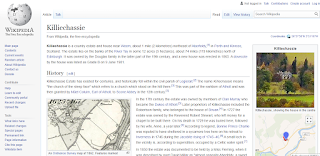Richard Dawkins is no stranger to making awful comments about trans people. In 2015 he tweeted out a comment asking if trans women are really women; and in April 2021 he was stripped of his Humanist of the Year award for making comments that compared trans women to black-face. He's made it clear in the past that he does not consider trans people's identities to be real, and has focused on trans women in particular when making such comments.
As such, it should be no surprise that he's gone on to make further comments, people who openly hate minority groups rarely stop themselves at just the single nasty comment, and has put his support behind a document that calls for the full legalised genocide of trans people.
On the 29th November 2021 Dawkins tweeted out a link to the 'WHRC Declaration on Women's Sex-Based Rights', stating 'Please sign the Declaration on Women's Sex-based Rights. I just have.'
 |
| Dawkins' tweet promoting the WHRC document. |
The WHRC Declaration on Women's Sex-Based Rights is a large document that contains a number of 'concerns' around the 1979 United Nations international human rights law framework, Convention on the Elimination of All Forms of Discrimination against Women. Specifically, the WHRC document calls for the complete and total eradication of all legal rights and protections for trans people, effectively stripping them of their human rights.
The document was written by Maureen O'Hara, Sheila Jeffreys, and Heather Brunskell-Evans. The three of them are regular fixtures in the Gender Critical sphere, often engaging in conversations and debates around trans rights. In the past Jeffreys has called trans women 'parasites', as well as calling trans people perverts and sexual predators; whilst Brunskell-Evans has been a backer of the antisemitic theory that trans people are being funded by Jewish millionaires.
The WHRC declaration claims that trans people are upholding gendered stereotypes, and that by existing as the gender they identify as they are promoting harmful stereotypes about what it means to be a particular gender; and they claim this is in direct contravention to the aims set out in the UN Convention on the Elimination of All Forms of Discrimination against Women. In essence, it makes the argument that trans women even existing is a form of discrimination against cis women, because trans women can only ever act up to a harmful stereotype.
'the concept of ‘gender identity’ has enabled men who claim a female ‘gender identity’ to assert, in law, policies, and practice, that they are members of the category of women, which is a category based upon sex.' is one claim in the WHRC document.
The WHRC document goes on to complain that trans women are able to call themselves mothers, and that they feel it is harmful that they can do this, without outlining any way in which that actually impacts any form of maternity rights or women's protections. The document takes this strange stance on motherhood and giving birth further, by declaring that it's wrong to engage in surrogate pregnancies. It in effect pushes for the ban on surrogate pregnancies as a whole, thereby taking rights away from women.
 |
| Heather Brunskell-Evans, one of the authors of the WHRC document. |
The document makes claims that trans people should not be allowed access to certain public spaces, saying that trans women should not be allowed access to domestic or sexual violence help, public toilets, changing rooms, and other single sex spaces that trans people currently have every legal right to use, and have been using without incident for decades. The document, by wishing to remove these rights from trans people, is effectively calling for the banning of trans people from public life.
This might not seem like much, but imagine if you knew you could never use a public toilet, that the only place you could pee is you own home. Imagine that you would be prevented from using changing rooms, that you would be denied support in extreme circumstances. How would you be able to go to the gym? How would you be able to try on clothes whilst shopping? How would you be able to go out for a meal, to the cinema, or even hold down a job if it meant that every time you needed to pee you had to travel back to your house to do so?
It would be impossible to live your life that way. You couldn't go out of your house for more than an hour at a time, and could only travel a short distance for fear of having to rush home. You couldn't hold down a job that wasn't working from home. You wouldn't be able to attend school or engage in education. You wouldn't be able to live your life. And that's what this document is calling for. It wants every legal right and protection taken away from trans people so that we would be unable to leave our homes. These people don't want us to exist in the world. And Richard Dawkins has told the world that that's the kind of world that he wants by signing and promoting this document.
If you see the simple act of being trans as an attack on womanhood you're advocating for trans genocide. If you're calling for trans people to be stopped from existing in pubic you're advocating for trans genocide. If you're pushing for the removal of trans healthcare you're advocating for trans genocide.
Maybe Dawkins has failed to really look at what's in this document, maybe he's been taken in by the surface level 'concerns' about women's safety. But I doubt that. This isn't the first time that Dawkins has made transphobic comments. It's not the first time he's made misogynistic comments aimed at trans people. So I doubt that he's signed a document targeting trans people, and making a point of centring trans women, is anything but a deliberate act of hatred and abuse in the hopes that trans people are erased from the world.




























